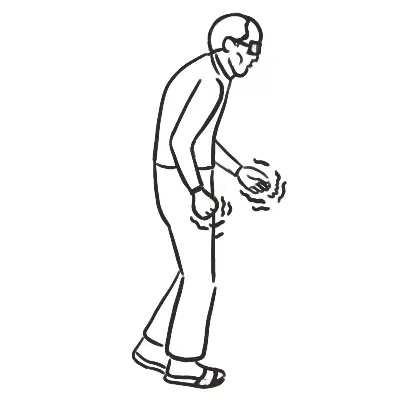Parkinson’s Presentation


Parkinson’s disease is a progressive neurodegenerative disorder characterised by tremor, rigidity, bradykinesia, and a wide spectrum of non-motor symptoms including sleep disorders, hyposmia, bladder and bowel dysfunction, fatigue, dementia, and other neuropsychiatric symptom. Although the disease has no cure, available treatments effectively control motor symptoms and improve quality of life. Parkinson disease affects approximately 1 percent of persons older than 60 years, and up to 4 percent of those older than 80 years.
General
Gait
Movement
Head
Arms
Differentials for Parkinson’s Disease
Rule out Parkinson Plus syndrome
| More information of Parkinson Plus Syndrome click here |
| Classification of Tremor | |
| Resting Tremor | Parkinson’s |
| Postural/action tremor | Idiopathic, anxiety, drugs, familial |
| Essential Tremor | Familial |
| Intention tremor | Cerebellar (increases towards target) |
| Midbrain tremor | Movement of upper limbs associated with intention tremor |

Please confirm you want to block this member.
You will no longer be able to:
Please allow a few minutes for this process to complete.
Discussion